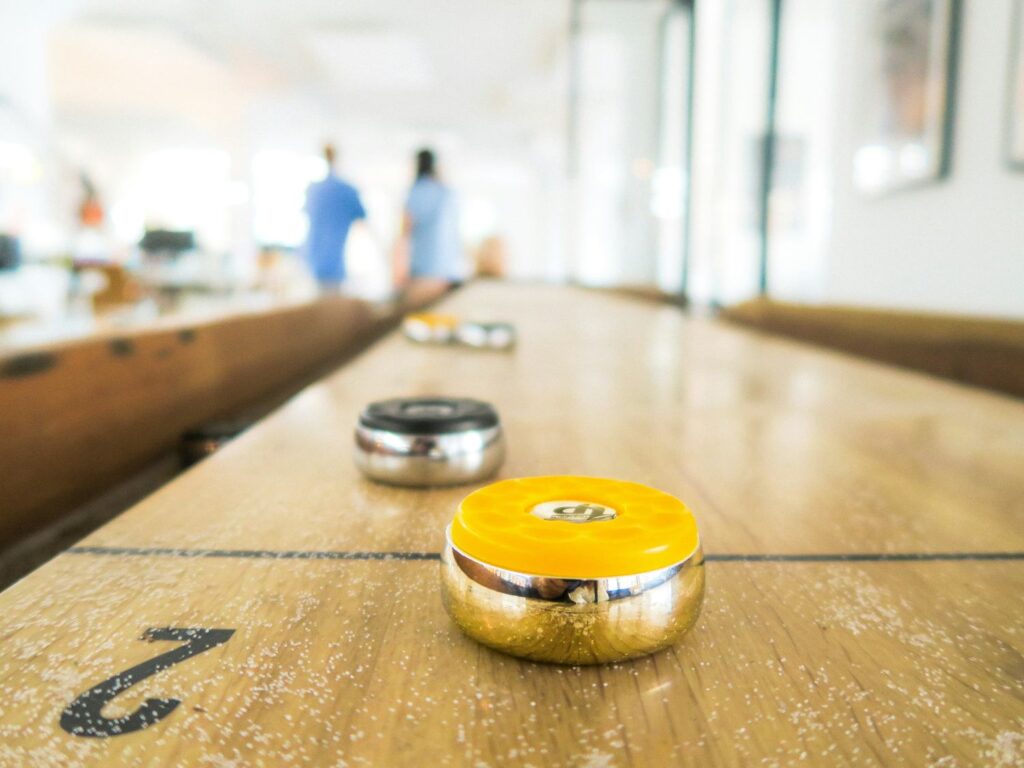Statistics on Consumer Trends and Nightlife’s Diversification
At NDML, we recently attended The Competitive Socialising Awards 2025, hosted by Gamechangers Organisation. As well as exhibiting and presenting an award, we listened in to many of the fantastic speakers at the event. A very special speaker, Jo Lynch from KAM Insights discussed the statistics around customer trends for activity-led venues.

We linked up with Jo afterwards and she has generously shared with us her slides from the presentation. Much of the detail is sourced from KAM Insight’s knowledge hub, specifically their Competitive Socialising Customer 2025 Report, available here. KAM Insights also researches topics such as wellbeing, salaries, bookings, sales and menu choices – through the scope of metrics and statistics.
Jo’s presentation focusses on the most important issues facing British nightlife according to the consumer, as well as changes in spending habits. From these learnings come recommendations and an understanding on the state of the industry as a whole. Much of Jo’s findings are based around competitive socialising activities, with it being the fastest growing trend in the sector.
Below we’ve put together a few of our standout points from Jo’s presentation and also the 2025 Report. To read the full report – sign up at KAM Insights here – or contact us and we’ll put you in touch.
1) Competitive Socialising is currently dominating the nightlife scene.
The stats suggest that competitive socialising is the people’s favourite nightlife activity. Reviewing NPS scores (net promoter scores), Jo shows how competitive socialising is outperforming the wider hospitality industry.
A significant proportion of the adult population of the UK have visited a competitive socialising venue in the past year – at 29%. These are venues which offer games and activities or experiences, alongside food or drink. The appetite for competitive socialising is still growing, with an increase in repeat customers, at 41% each month from 35% in 2023.
Because of increased hospitality business diversification, the trend is able to grow outside of dedicated venues. 64% of the adult population said the traditional pub they’ve visited had a competitive socialising element. 80% of which believe this is a positive addition.
2) What are the key differences between competitive socialising venues, and a regular bar or pub?
- 83% of UK adults think you make more memories when visiting an experiential leisure venue compared to a regular pun or bar.
- 77% prefer experiential leisure venues as a date spot.
- 82% believe experiential leisure venues are more inclusive.
- 65% believe introverts are more likely to enjoy the night out when visiting an experiential leisure venue compared to a regular bar or pub.
3) What are the most popular games a venue should consider adopting?

Kam Insights have reported a definitive list of the top ten most popular games. The list shows there’s something to be said for nostalgia and classic gaming experiences. Arcades have made a clear resurgence, while more modern technologically advance options are also popular.
- Arcades
- Ten Pin Bowling
- Crazy / Adventure Golf
- Bingo
- Football
- Pool
- Darts
- Board Games
- Escape Rooms
- Go Karting
4) Do the stats show a recommendation for venues to diversify?
Jo Lynch, in her presentation, assessed the necessity for nightlife businesses to diversify and adopt competitive socialising activity. Jo reported the psychological benefits – including improved mood, reduced stress increased enjoyment and a stronger sense of belonging.
She posited that adding these activities is likely to build the emotional relationship toward a business, rather than having merely a transactional relationship. When customers feel emotionally connected to a brand, Jo says they are proven to visit much more often, have a memorable experience, forgive poor service and are more likely to recommend the brand – these metrics are far higher in 18 – 35 year olds.
Delivering the best customer experience should be the focalpoint of the business, and offering games and activities help bolster the overall dwell time of customers.
5) Alcohol choice and a change in drinks preference
Low and no alcohol options have grown in popularity. The next generation of drinkers are happy to have (mostly) sober nights out; preferring the feeling of competition over alcohol. 77% of adults are less reliant of alcohol to have a good times when visiting competitive leisure venues. Therefore, venues considering diversifying toward competitive socialising activities should also alter their menus and available drink options.

6) What are the obstacles to going out that nightlife venues should look at combatting?
Determining the top reasons why customers might not come out is a great way to both understand the customer’s needs, and work toward improving profitability. By understanding the main obstacles, businesses can find solutions to reduce and minimise this challenge – therefore increasing the likelihood of nights-out.
When asked what’s holding back customers from choosing to go on a night out, they said:
- The cost of going out
- The location
- Finding enough people to play the games
- Booking in advance (no space for walk-ins)
- Cost of experiential leisure vs regular bars and pubs
Reviewing these obstacles, businesses need to assess whether their prices match their consumer base. Competitive socialising is favoured by the younger demographic (18-35), at 77% enthusiasm.
Be Aware – Adopting Competitive Socialising Activities can affect your insurance.
Adding competitive socialising aspects, such as shuffleboard or arcade machines, can impact your liability insurance and contents cover. Always consult with an expert broker when making a purchase that alters your venue.
Furthermore, events such as cooking classes or games conventions can also impact your risk liability and capacity limits. Discuss with a dedicated broker when planning such an event.
